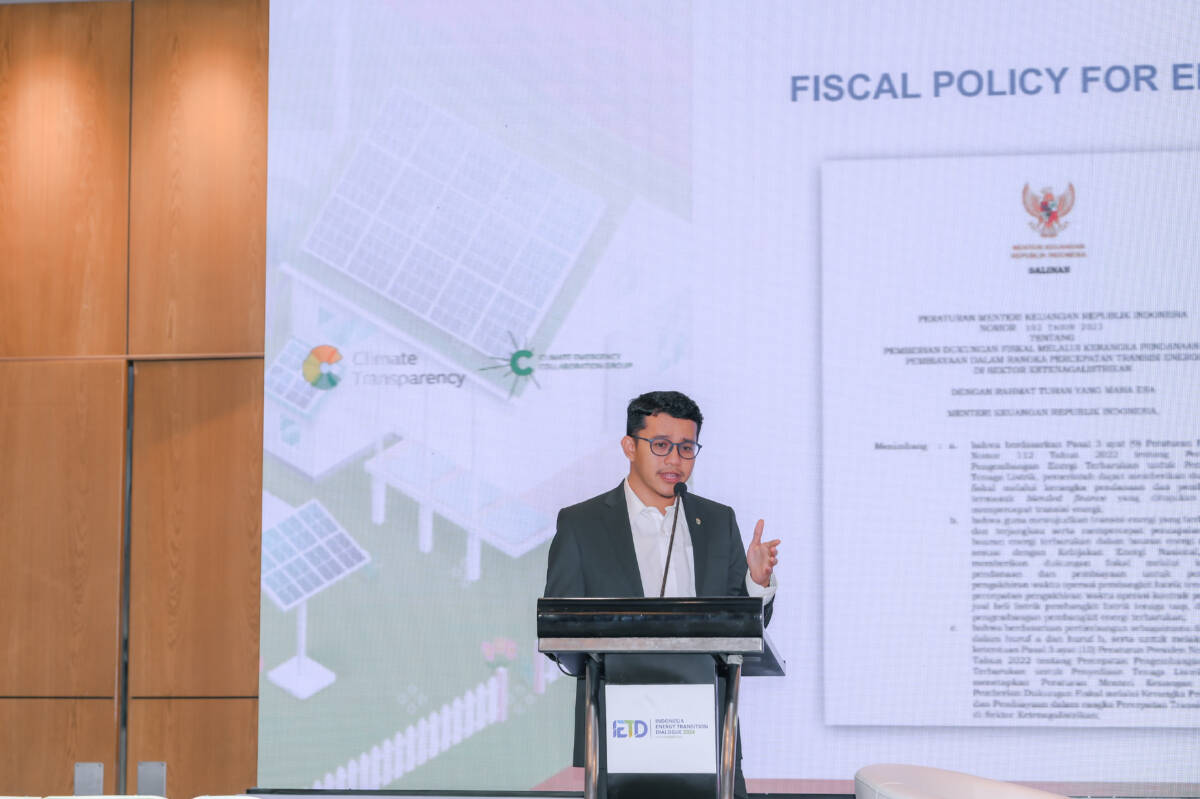Jakarta, November 6, 2024 – Indonesia must promptly establish a roadmap for the early retirement of coal-fired power plants to provide a reference for identifying and developing solutions, anticipating risks, and fostering collaboration between government agencies and financial institutions. The Institute for Essential Services Reform (IESR) highlights that coal-fired power plants are significant contributors to emissions, making a strategy for their early retirement crucial to accelerating emission reductions. Presidential Regulation (Perpres) 112/2022 on the Acceleration of Renewable Energy Development for Electricity Supply restricts the construction of new power plants, except in the industrial sector and for plants already in the pipeline.
According to IESR analysis, achieving alignment with the Paris Agreement target of limiting global temperature increase to 1.5 degrees Celsius requires zero emissions in the energy sector by 2050. Emission mitigation efforts should be focused on on-grid coal power plants within the PLN network, which are generally older, targeting 68% emission reductions, with the remainder from off-grid plants. These efforts will consider each plant’s capacity, asset age, and differing energy demands.
Deon Arinaldo, IESR’s Energy System Transformation Program Manager, explained during the “Unlocking the Indonesia Coal Retirement Roadmap” (5/11/2024) session at the Indonesia Energy Transition Dialogue (IETD) 2024 that the Indonesian government is currently focused on using ammonia and carbon capture and storage (CCS) technology to mitigate emissions from coal power plants. However, Deon noted that this strategy requires consideration of potential electricity cost increases, the limited maturity of CCS in carbon capture, and competition with industrial needs for ammonia.
“Most on-grid power plants are approximately 20 years old, while captive power plants average around 10 years. Therefore, intervention strategies are more feasible for on-grid plants. Our analysis suggests that early retirement strategies should differ for on-grid and captive plants. On-grid plants need to consider electricity capacity, technical stability, and investment availability. Some on-grid plants can be retired, while others could operate flexibly. For captive plants that can be replaced by renewables, up to 26% may transition, while the remainder can use cleaner fuels temporarily until long-term solutions, like integration with the PLN network, are available,” Deon said.
IESR urges the government to establish an early retirement roadmap for coal-fired power plants, considering four key areas, first, ensuring strong political commitment and leadership, ideally led directly by the president, as an early retirement coal plant is unprecedented in Indonesia. Second, developing diverse solutions to mitigate and manage potential negative impacts on stakeholders, including PLN, power plant owners, and workers. Third, clarifying the funding requirements and targets for coal plants needing financial support from both domestic and international sources. Fourth, enhancing collaboration among government, financial institutions, and the private sector to identify innovative solutions.
“Implementing the roadmap requires a firm commitment, ideally guided by the highest leadership, such as the president of the Republic of Indonesia, to prioritize collaboration among relevant ministries and stakeholders,” Deon added.
On financing, IESR’s analysis indicates that accelerating the energy transition will require investments of around USD 20-40 billion per year until 2050. Yet, public investment in renewable energy has averaged below USD 2 billion annually from 2017 to 2023. In 2022, private sector investment in renewable energy rose to IDR 26 trillion, or USD 1.7 billion.
Putra Maswan, IESR’s Finance and Economics Analyst, stated that public funding is essential to attract private investment, which remains risky due to the novelty of the energy transition market. He added that IESR has assessed Minister of Finance Regulation (PMK) No. 103/2023 as a basis for allocating the state budget to support the early retirement of coal-fired plants.
“This PMK is strong in legal aspects but falls into the ‘medium’ category regarding governance, funding sources, and monitoring and evaluation frameworks,” Putra explained.
To strengthen PMK No. 103/2023 governance, IESR recommends four improvements: providing clear guidance on budget implications, increasing transparency for the Energy Transition Platform, reinforcing the regulatory framework, and supporting institutional capacity building.
The “Unlocking the Indonesia Coal Retirement Roadmap” session was supported by Climate Transparency and the Climate Emergency Collaboration Group. The Indonesia Energy Transition Dialogue (IETD) 2024 was organized by the Indonesia Clean Energy Forum (ICEF) and IESR in collaboration with the Ministry of Energy and Mineral Resources (MEMR). The seventh IETD, held on November 4-6, 2024, featured the theme “Realizing an Equitable and Orderly Energy Transition.” IETD 2024 included 11 sessions, with topics and formats featuring 50 national and international speakers, panelists, and moderators.
The outcomes of IETD 2024 will be compiled as recommendations for the Prabowo-Gibran administration to support an equitable energy transition and advance energy independence over the next five years.

